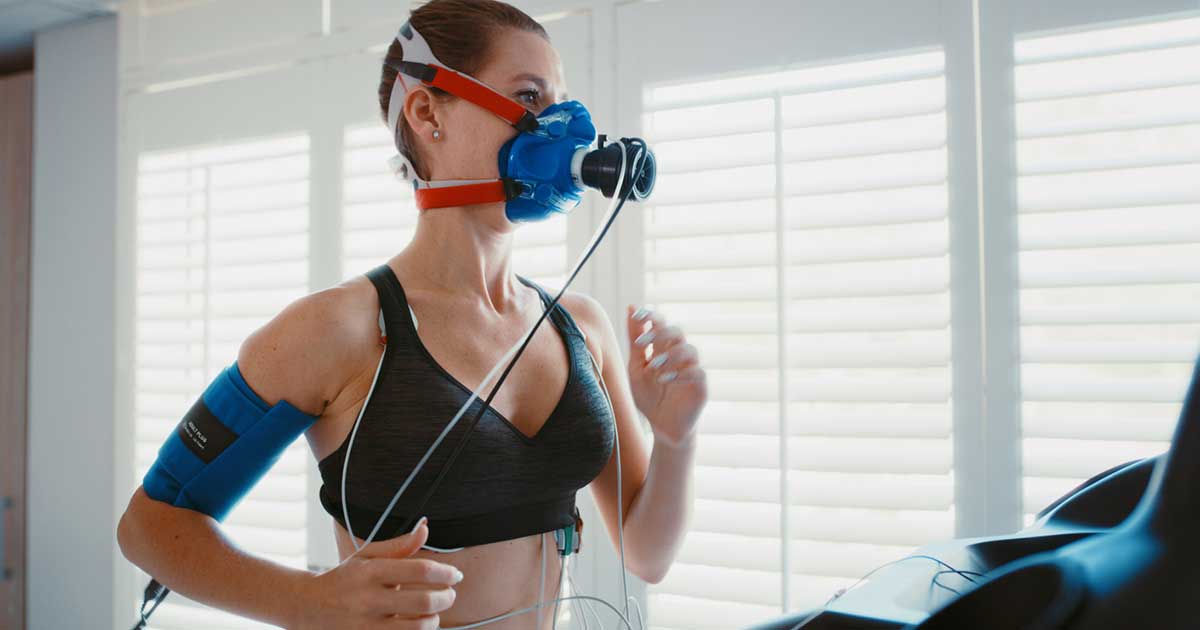To Improve Heart Health, Start Slowly, Listen to Your Body
Advice to improve your movement, fitness, and overall health from the world's #1 in orthopedics.
Along with strength and flexibility exercises, cardiovascular training is a mainstay of musculoskeletal fitness. The healthier your heart is, the easier it will be to move through your day. Climbing stairs, shopping for groceries, house and yard work and walking around your neighborhood all become easier when your heart is in tip-top shape. If it's been a while since you've gotten your heart pumping, start slowly with moderate, low-impact exercise and eventually add vigorous, higher-intensity activities to benefit your muscles and joints.

The Importance of a Healthy Heart
When your heart is in good shape, it doesn't have to pump as hard to support your body's needs. Your muscles get the oxygen they need to function, physical activity can be accomplished at a lower level of intensity and your movements become more fluid. When you have poor heart health, your muscles will not reach their aerobic capacity, you'll feel more tired and everything will seem harder to do.
Many people who were restricted to their homes because of lockdowns or for work or childcare reasons found themselves moving less. Gyms were closed and it was more challenging for some to find time or places to work out. Now is a great time to resume healthy physical activity — but take it slow and work your way back up to regain a healthy heart.
Calculate Your Target Heart Rate
- Figure your maximum heart rate*: 220 minus your age. (Example: for someone age 50, max heart rate is 220-50 = 170 beats per minute or bpm)
- For moderate exercise, target heart rate is 50%-70% of your max heart ate (85 to 119 bpm for someone age 50).
- For vigorous activity, target heart rate is 70%-85% of your max heart rate (119 to 145 bpm for someone age 50).
*Since beta blockers change the way your heart rate rises with exercise, use perceived exertion to gauge moderate versus vigorous exercise if you are taking these medications.
The American College of Sports Medicine publishes a questionnaire you can complete to see if you need medical clearance from your doctor before embarking on an exercise program.
Start Low and Slow
Begin with exercises that don't put too much stress on your muscles and joints and enable you to move safely. For three to four weeks, on as many days per week as you can, engage in low-impact activities such as:
- walking
- bicycle riding
- swimming
- elliptical trainer
If you used to run five miles at a time but haven't been running in a year, you can't expect to go out and run five miles right off the bat; dial it back and work your way up again.
Add Some Resistance
After engaging steadily in low-impact activities for several weeks, you'll find that they feel easier and it can be more challenging to get your heart rate up. That's a good sign you are getting fitter and it's time to add some intensity to your workouts. Before moving on to high-impact, high-intensity exercises, however, start incorporating strength training into your workouts. They are vitally important to help you build strength and a strong core, support your joints and reduce your risk of injury.
Types of strength training
- squats
- row-pulling exercises
- clamshells
- bridge pose
- plank
- side plank
- exercises using elastic exercise bands, which are safer to start with than dumbbells and weights
- free weights and pulley weights (get guidance from a professional before starting)
How do I do resistance exercises? If you haven't done strength training before, a consultation with an exercise physiologist, physical therapist or trainer is a good place to begin. You want to be sure you are choosing the best exercises for your body and doing them correctly to avoid injury and maximize benefit.
How often should I do strength training? The American Heart Association as well as the US Centers for Disease Control and Prevention advise doing strength training two to three days each week.
How many sets should I do? Start with two sets of each exercise, 10 repetitions per set. When that starts feeling too easy, increase to 12 reps per set, then 15 reps per set, then from two sets to three sets per exercise.
How do I increase weight or resistance? When your exercises feel too easy and you are doing three sets of 15 reps per set, you can start increasing the resistance. If you are using bands, increase to bands that offer more resistance. If you are using weights, add 2.5 pounds at a time. You may need to reduce the number of sets and reps at the higher intensity level and work your way up before increasing the resistance again.
Get Your Heart Pumping
With strength training in place and your muscles and joints feeling stronger, you can add more vigorous cardio exercises to your routine to further boost your heart rate. The speed and/or intensity of elliptical training, bicycling, walking and swimming can all be increased to further elevate your heart rate. As long as your doctor feels it is safe for your body, you can also engage in running. Find the activities that are comfortable for you.
Achieving Long-Term Success
A good way to stick with your program and achieve steady progress is to start slowly, listen to your body and find activities you enjoy. Your heart rate will tell you when you are doing too much or not enough. It's normal to feel some muscle soreness when you are getting started or switching to more intense activity, but pain due to an injury or overworked muscles is a signal that you are moving too quickly. Give your body the rest it needs and get back to exercising when it feels right.
An exercise physiologist, physical therapist or trainer can help monitor your progress and ensure that you are where you need to be. They are excellent partners in your cardiovascular fitness program and can help you stay healthy and accountable.
This article is from the Health Connection: Movement is Medicine issue and brought to you by Community Education & Outreach.
Published 8/30/2021




